10 Best Native Plants for Kentucky
BY AUSTIN GEIGER | APRIL 28TH, 2023 | KENTUCKY, LAWN CAREIf you’re looking for new plants to put in your outdoor space, your state’s native flora are often the best candidates. Not only are they beautiful and hardy, but they’re also very beneficial for your local environment. Here are some of the best native plants for Kentucky to help you decide which blooms to add to your landscape.
In this article, we’ll cover:
- 10 Native Plants for Your Kentucky Yard
- How to Choose Native Plants for Your Kentucky Landscape
- FAQ About Native Kentucky Plants
- Where to Find Native Plants in Kentucky
Native Plants for Your Kentucky Yard
1. Turk’s Cap Lily (Lilium superbum)
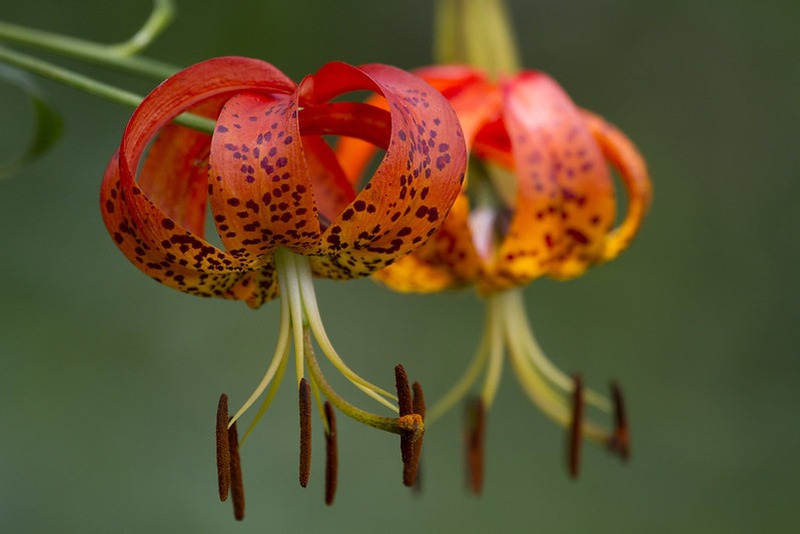
Photo Credit: Shenandoah National Park / Flickr / Public Domain Mark 1.0
The Turk’s Cap Lily is a beautiful and unique wildflower native to a select few counties across Kentucky. Its stunning red-orange flowers face downward and are a great attractor for pollinators, especially hummingbirds and butterflies. At 6 to 9 feet tall fully grown, it can be either an accent plant or a centerpiece for your garden.
Turk’s Cap Lily can tolerate either full or partial sun. It has somewhat high water needs, but is low-maintenance and can handle a few different soil types. If you do choose this plant for your landscape, keep in mind that it, like all true lilies, is deathly poisonous to cats.
Plant Type: Wildflower
USDA Hardiness Zone: 4 to 7
Sun: Full to partial sun
Soil: Moist but well-drained, acidic or neutral sandy or loam soils
Duration: Perennial
Fragrance: Sweet
Bloom Time/Season of Interest: Early to mid summer
Water Needs: Moderate to high
Mature Height: 6 to 9 feet
Potential Hazards: Toxic to cats
Maintenance Needs: Low
2. Coral Honeysuckle (Lonicera sempervirens)
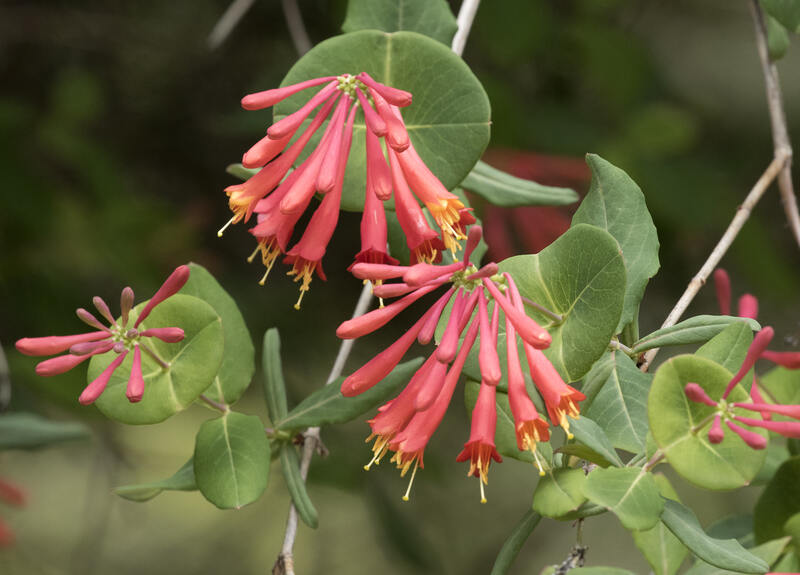
Photo Credit: Zeynel Cebeci / Wikimedia Commons / CC BY-SA 4.0
Coral honeysuckle is a flowering vine native to Western and Central Kentucky, one with beautiful red tube-shaped flowers that are beloved by hummingbirds. It can handle either full or partial sun and has fairly low water needs. This honeysuckle can tolerate just about any soil type so long as it’s well drained.
Since it’s a climbing plant that needs support to grow, the best way to use coral honeysuckle in your landscape is with a trellis or similar structure. Alternatively, you can let it grow around the pillars of an outdoor structure such as a gazebo in order to give it a nice accent. If you do plant it in your landscape, however, remember that its berries are toxic to humans and that the entire plant is poisonous to pets.
Plant Type: Flowering vine
USDA Hardiness Zone: 4 to 9
Sun: Full to partial sun
Soil: Moist but well-drained, all soil types
Duration: Semi-evergreen, evergreen in warm climates
Fragrance: None
Bloom Time/Season of Interest: Spring, early summer, and autumn
Water Needs: Low to moderate
Mature Height: 8 to 15 feet
Potential Hazards: Berries are toxic to humans, all parts are toxic to pets
Maintenance Needs: Low
3. Purple Coneflower (Echinacea purpurea)
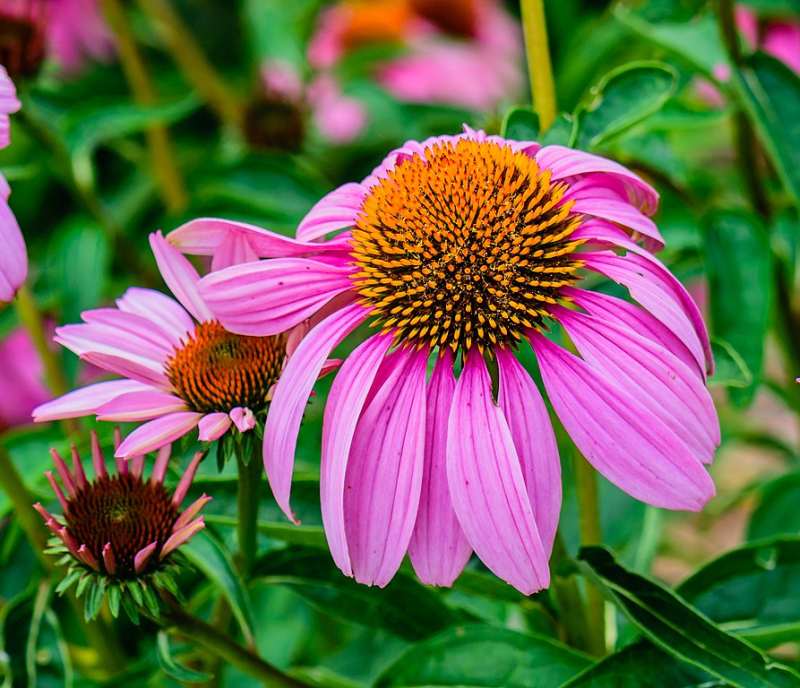
Photo Credit: PumpkinSky / Wikimedia Commons / CC BY-SA 4.0
Purple coneflower is a Central Kentucky native wildflower with, as its name suggests, gorgeous purple petals. It can tolerate either full or partial sun along with a variety of soil types, and its water needs are relatively low. This flower makes a great addition to a flowerbed or container, and since purple coneflower is a favorite of many bee and butterfly species, it’s an especially good choice for a pollinator garden.
Plant Type: Wildflower
USDA Hardiness Zone: 3 to 8
Sun: Full sun to partial shade
Soil: Well-drained chalk, loam, or sandy soils
Duration: Perennial
Fragrance: Sweet, honey
Bloom Time/Season of Interest: Mid spring to summer
Water Needs: Low to moderate
Mature Height: 2 to 5 feet
Potential Hazards: None; has medicinal properties
Maintenance Needs: Low
4. Spicebush (Lindera benzoin)
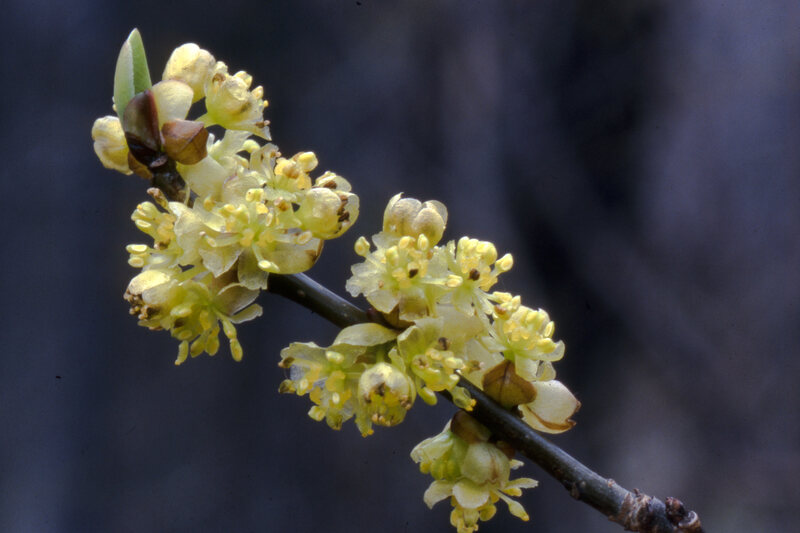
Photo Credit: NatureServe / Flickr / CC BY 2.0
Spicebush is a deciduous shrub native to most of Kentucky, one that can tolerate a variety of different soil types and partial shade. Its water needs are higher than most, but not unreasonably so. Its beautiful yellow flowers attract many pollinating insects, making it a great choice for a pollinator garden. If you’re growing a food garden instead, you’ll be happy to know that spicebush is also edible.
Regardless of what kind of garden you’re growing, spicebush is a versatile plant to grow in a landscape. It can be used as either a hedge for the border of your property or an accent piece in the landscape itself, though it’s not quite eye-catching enough to be a centerpiece.
Plant Type: Shrub
USDA Hardiness Zone: 4 to 9
Sun: Full sun to partial shade
Soil: Moist but well-drained clay, loam, or sandy soils
Duration: Deciduous
Fragrance: Allspice
Bloom Time/Season of Interest: Spring and autumn
Water Needs: Moderate to high
Mature Height: 6 to 12 feet
Potential Hazards: None; all parts of the plant except the roots and stems are edible and female plants have edible berries.
Maintenance Needs: Low
5. Eastern Redbud (Cercis canadensis)
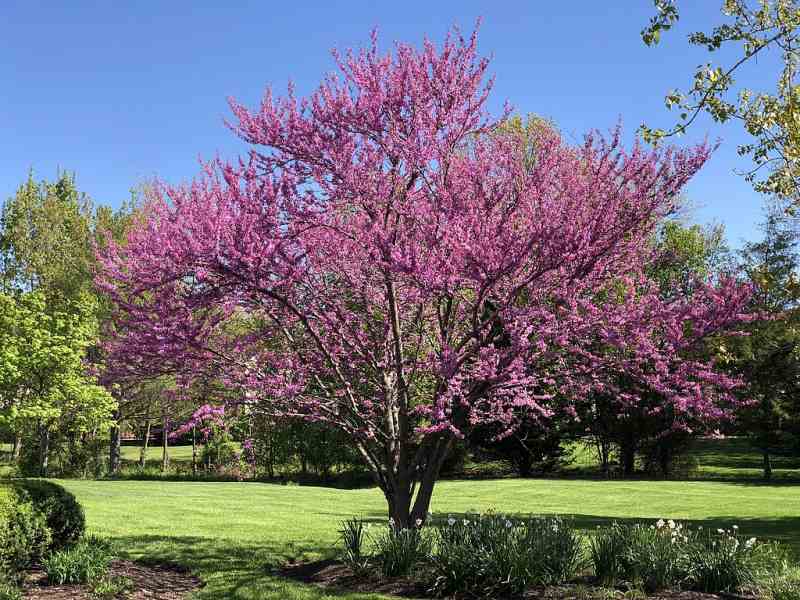
Photo Credit: Famartin / Wikimedia Commons / CC BY-SA 4.0
The Eastern Redbud is a deciduous tree native to Kentucky, with gorgeous pink leaves that can add a touch of color to your landscape. It’s also a hardy low-maintenance plant that can handle some shade and practically any soil type, and has reasonable water needs. The best way to use it in your landscape is as a centerpiece or, in the case of smaller individuals, an accent plant.
Plant Type: Tree
USDA Hardiness Zone: 4 to 9
Sun: Full to partial sun
Soil: Must but well-drained, all soil types
Duration: Deciduous
Fragrance: Sweet
Bloom Time/Season of Interest: Spring and autumn
Water Needs: Low to moderate
Mature Height: 20 to 30 feet
Maintenance Needs: Low
6. Swamp Milkweed (Asclepias incarnata)
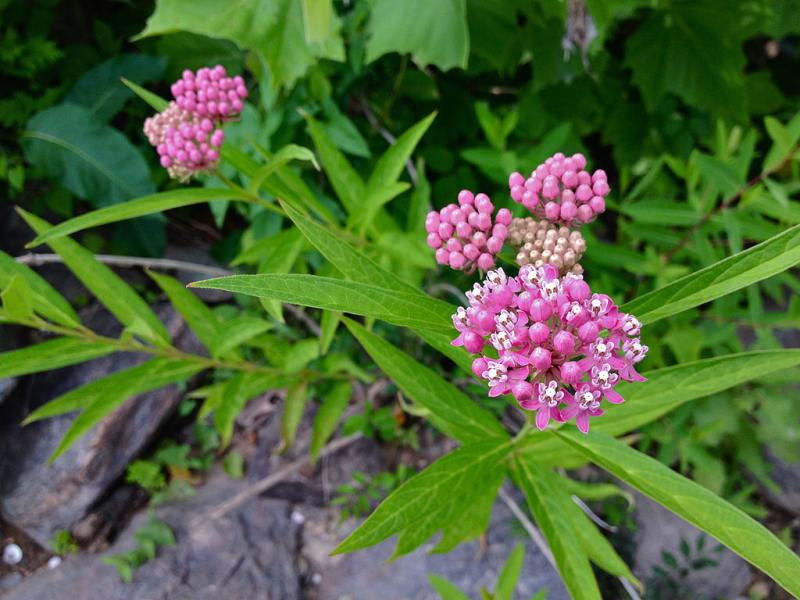
Photo Credit: Fritzflohrreynolds / Wikimedia Commons / CC BY-SA 3.0
Swamp milkweed is another Kentucky native wildflower, one with clusters of tiny pink-and-white flowers that are highly attractive to many species of pollinators, especially the monarch butterfly. It prefers full sun and has higher water needs than most plants, but it’s well worth the effort, as it looks gorgeous in flower beds or containers. Just keep in mind that this plant can be poisonous if too much is ingested, so keep it away from children and small animals.
Plant Type: Wildflower
USDA Hardiness Zone: 3 to 11
Sun: Full sun
Soil: Moist but well-drained clay or loam soils
Duration: Perennial
Fragrance: Vanilla
Bloom Time/Season of Interest: Mid to late summer
Water Needs: Moderate to high
Mature Height: 4 to 5 feet
Potential Hazards: Poisonous in large quantities
Maintenance Needs: Low
7. Red Columbine (Aquilegia canadensis)
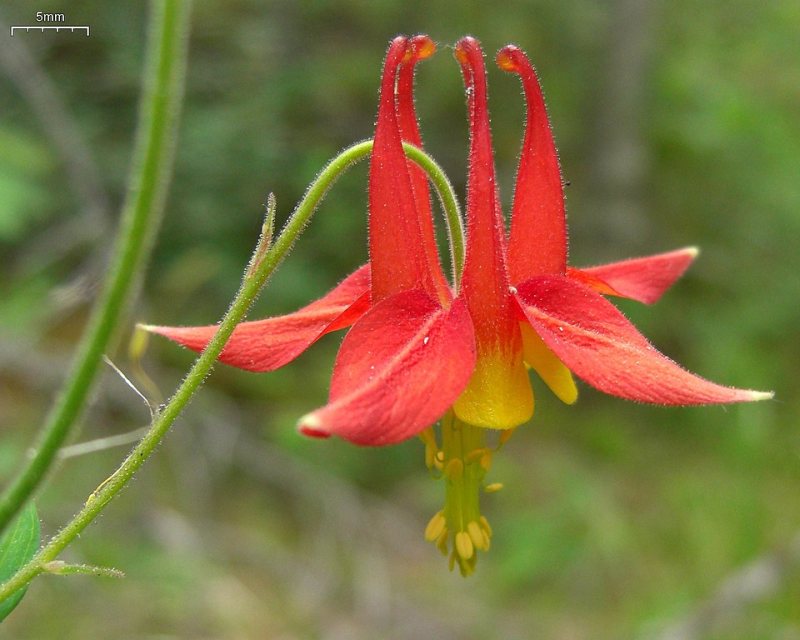
Photo Credit: Jason Hollinger / Wikimedia Commons / CC BY 2.0
Red columbine is a beautiful and hardy wildflower native to Kentucky. It can handle any soil type so long as it’s well drained, and tolerates either full or partial sunlight. This columbine has gorgeous red flowers that face downward and are very attractive to hummingbirds. It makes a great addition to flower beds and looks amazing in pots or other containers.
Plant Type: Wildflower
USDA Hardiness Zone: 3 to 8
Sun: Full to partial sun
Soil: Moist but well-drained, all soil types
Duration: Perennial
Fragrance: None
Bloom Time/Season of Interest: Late spring to early summer
Water Needs: Low to moderate
Mature Height: 2 to 3 feet
Potential Hazards: None; other columbine varieties can be mildly toxic to humans, however
Maintenance Needs: Low
8. Giant Goldenrod (Solidago gigantea)
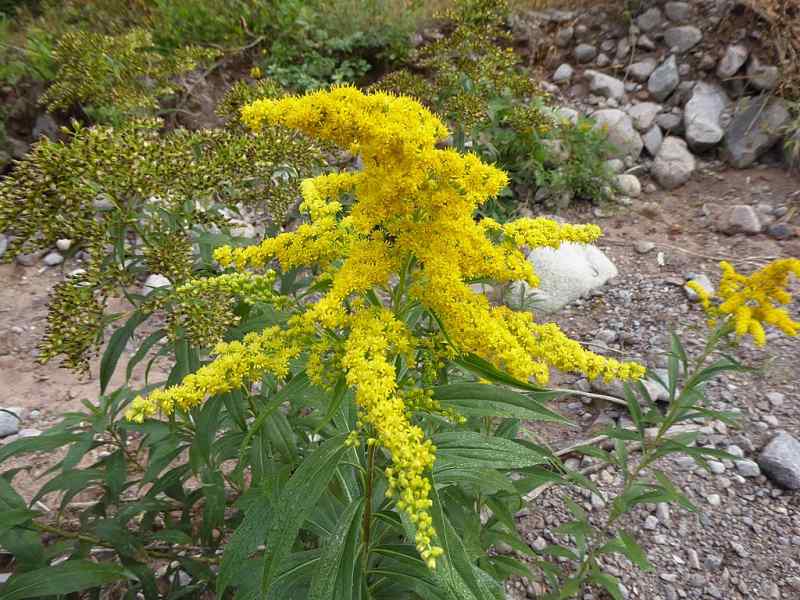
Photo Credit: Syrio / Wikimedia Commons / CC BY-SA 4.0
If you need a new native plant for your Kentucky landscape, there’s no better candidate than Kentucky’s state flower. The giant goldenrod is a perennial wildflower that prefers full sun, can handle a variety of soil types, and has above-average water needs. It has gorgeous clusters of tiny yellow flowers that pollinators love.
The best way to grow giant goldenrod depends on the size of the plant. At 3 feet tall on the low end, it makes for a good addition to your flower beds or containers or can be a small accent plant. Ones closer to the 7 feet tall higher end can be bigger accent plants or even a centerpiece or foundation plant.
Plant Type: Wildflower
USDA Hardiness Zone: 3 to 8
Sun: Full sun
Soil: Acidic or neutral, moist but well-drained clay, loam, or sandy soils
Duration: Perennial
Fragrance: Floral
Bloom Time/Season of Interest: Late summer to autumn
Water Needs: Moderate to high
Mature Height: 3 to 7 feet
Potential Hazards: None; this plant is edible and has medicinal properties
Maintenance Needs: Low
9. Smooth Blue Aster (Symphotricum laeve)
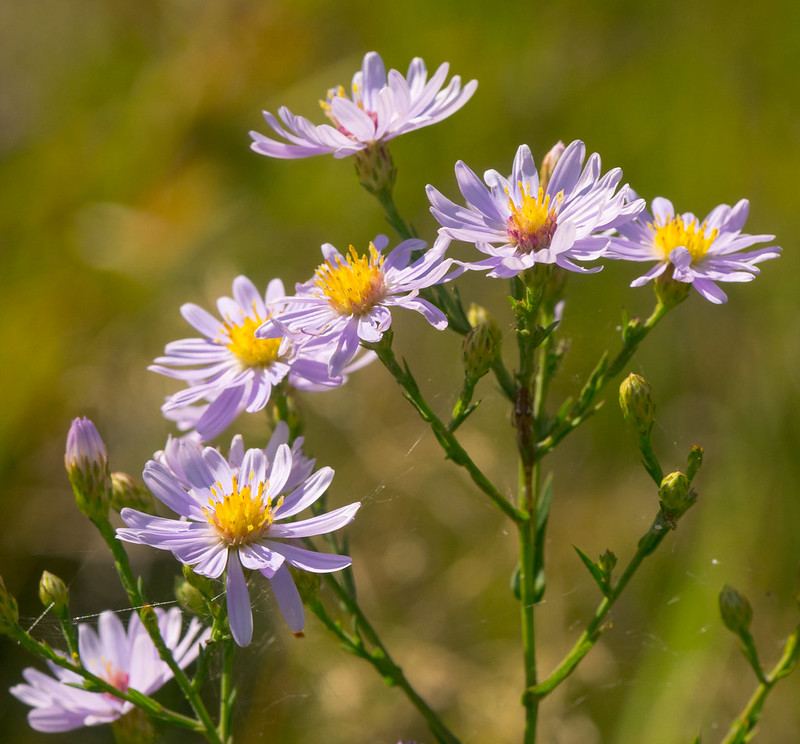
Photo Credit: Joshua Mayer / Flickr / CC BY-SA 2.0
Smooth blue aster is a perennial wildflower native to Northern and Southern Kentucky, one that has gorgeous purple-blue flowers with yellow centers. It’s low-maintenance, likes full sun, handles just about any soil type as long as it’s well drained, and doesn’t need a lot of water, making it a great candidate for a low-maintenance landscape.
Since smooth blue aster blooms later in the year when many other pollinator plants have closed up shop, it makes a fantastic addition to a pollinator garden to keep them coming in during the later seasons. Regardless of the type of garden you have, this flower is a wonderful addition to your flower beds and looks amazing in containers.
Plant Type: Wildflower
USDA Hardiness Zone: 3 to 8
Sun: Full sun
Soil: Moist but well-drained, all soil types
Duration: Perennial
Fragrance: None
Bloom Time/Season of Interest: Late summer to autumn
Water Needs: Low to moderate
Mature Height: 2 to 4 feet
Maintenance Needs: Low
10. Tulip Poplar (Liriodendron tulipifera)
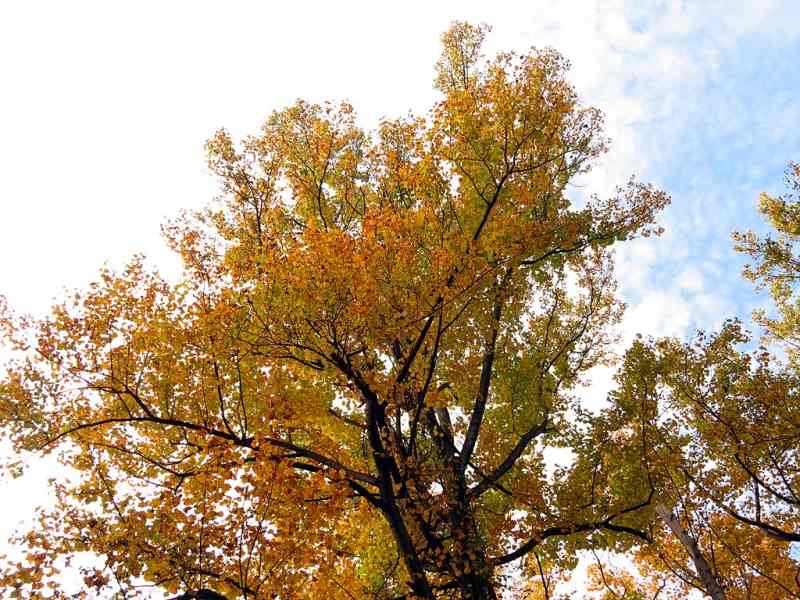
Photo Credit: Katja Schulz / Wikimedia Commons / CC BY 2.0
As Kentucky’s state tree, you’ll be hard-pressed to find a better native tree for your Kentucky landscape than the tulip poplar. This deciduous tree likes full sun, handles a variety of soil types, and has moderate water needs. It’s low-maintenance and has gorgeous yellow flowers that attract pollinators. The best way to use it is as a centerpiece, as at 60 to 80 feet on average, it tends to dominate a landscape.
Plant Type: Tree
USDA Hardiness Zone: 4 to 9
Sun: Full sun
Soil: Acidic or neutral, moist but well-drained clay, loam, or sandy soils
Duration: Deciduous
Fragrance: Spicy, magnolia
Bloom Time/Season of Interest: Mid spring to autumn
Water Needs: Moderate
Mature Height: 60 to 80 feet
Maintenance Needs: Low
How to Choose Native Plants for Your Kentucky Landscape
When trying to decide which native plants to install in your Kentucky landscape, the first thing you need to look at is the conditions it has to offer. Every plant has its own individual needs, and if your outdoor space is ill-equipped to support a certain one, you may find yourself struggling to support it. For example, if your landscape gets a lot of sunlight, you need plants that thrive in full sun.
You also need to look at the soil you have. Its pH balance, composition, and drainage are all very important for your plants, native or not. If you don’t know these things yet, find out and choose plants that match your soil’s qualities.
Another good criterion is your area’s hardiness zone. The USDA hardiness zones indicate the average minimum temperature of your area. Most of Kentucky is in 6a to 6b, while a small portion is in 7a. This means that the average minimum temperature is 0 to -10 degrees Fahrenheit for most areas, while that small part is 0 to 10.
FAQ About Native Kentucky Plants
Which plants are native to Northern Kentucky?
Every plant on this list aside from Turk’s Cap Lily is native to the northern areas of Kentucky. However, some plants are only native to a few counties in the area and not the region as a whole. Some of the less-prolific plants on this list are Purple Coneflower, Coral Honeysuckle, Giant Goldenrod, and Smooth Blue Aster.
Which plants are native to Southern Kentucky?
Every plant on this list is native to Southern Kentucky. However, the majority of them are only native to a few counties and are not prolific throughout the region. These plants are Turk’s Cap Lily, Coral Honeysuckle, Purple Coneflower, Red Columbine, Giant Goldenrod, and Smooth Blue Aster.
Which plants are native to Western Kentucky?
All of the plants on this list aside from Purple Coneflower, Red Columbine, and Smooth Blue Aster are native to the western counties in Kentucky. Three, however, are not as prolific as the others and are only native to a few scattered counties; Turk’s Cap Lily, Coral Honeysuckle, and Giant Goldenrod.
Which plants are native to Louisville?
Louisville’s native plants include, but are not limited to:
- Trumpet Honeysuckle
- Cardinal Flower
- Eastern Redbud
- Purple Coneflower
- Northern Spicebush
- Swamp Milkweed
- Spotted Geranium
- Wild Hydrangea
- Sensitive Fern
Where to Find Native Plants in Kentucky
If you want to find new native species for your backyard, there’s no better inspiration than Kentucky’s natural places. Take a walk through places like Raven Run Red Trail and look for native plants that you’d like in your landscape. If you do, however, ensure that you never take plants directly from the wild to avoid upsetting a delicate ecosystem.
To ethically and safely procure native plants, look for retailers endorsed by the Kentucky Native Plant Society.
If you’re having trouble maintaining your new landscape, a Kentucky lawn care pro near you can help. Connect with trusted pros in Louisville, Lexington, and many other cities throughout the state.
Main Photo Credit: Cryptosporella / Wikimedia Commons / CC BY-SA 3.0